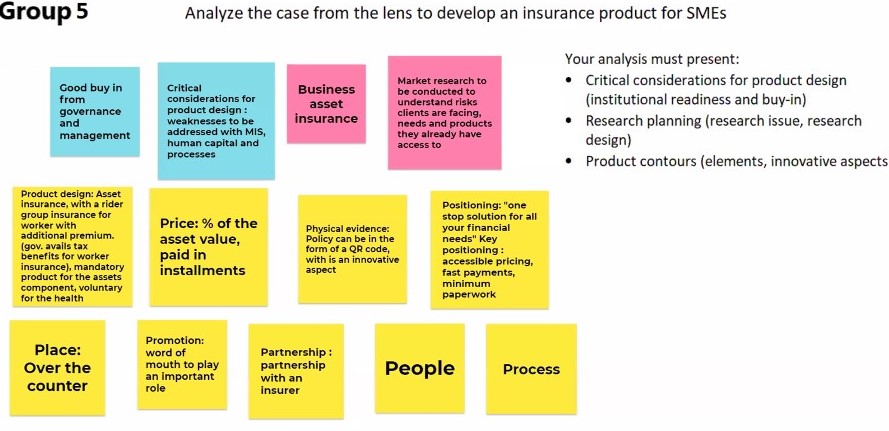This week’s module was on “rethinking financial products for the digital age”. The module was presented by Anup Singh, Regional Head for Microsave Consulting, and consisted in videos, live discussions, and various readings.
Anup Singh introduced the module with the following claim: we have moved from a product-driven microfinance industry to a market-driven industry, with major trends such as the emergence of new customers, new players (Fintech), new innovative products, new opportunities on the use of data, but also exposure to new risks and increased competition.
This is what Gary Woller underlines as well in a paper [1] that was part of this week’s readings. In this paper, Gary Woller explains how the “product-oriented approach to microfinance” was initially driven by the main challenge the sector had to tackle: “how to deliver small loans in a cost-effective and sustainable manner to a poor and often hard-to-reach clientele, absent physical collateral, information asymmetries, and with relatively high per-units costs.” The answer, for many decades, has been MFIs offering standardised products, with a focus on productive loans, “forced savings, de-emphasis on voluntary savings, joint liability” and a “heavy emphasis on repayment discipline”. MFIs have often been assuming that poor customers had uniform needs, little business cyclicity, and primarily needed productive loans. Yet, there is growing evidence that poor customers have much more varied and complex financial needs. Simply put, according to Gary Woller, “MFIs have focused on the products they could produce rather than the products and services customers want them to produce; on institutional needs rather than on customer needs.”
With the emergence of new players in the market (Fintech, MNOs, payment service providers…), MFIs will need to transition quickly from a product orientation to a market orientation if they want to survive, and to offer products that truly answer their customers’ needs.
To do so, Anup Singh is proposing a five-step process to develop products that was detailed in the module:
Here are some key intakes from the module:
Key questions to answer before new product development
Before embarking on the development of a new product, MFIs should analyse several elements, as outlined in one of the readings [2]:
Key success factors for product development
Some key factors for product development, as stressed by Anup Singh, include:
The importance of pilot testing
As underlined by Cheryl Frankiewicz [3], pilot tests are very useful in gauging real demand for a product, in assessing the internal capacity for roll out of the product; and to contain costs. It is indeed easier, cheaper and faster to identify and respond to problems in a limited and controlled environment of a pilot test, rather than after the product has been roll out in all the branches/ in the full institution. Pilot testing is also useful to manage change (staff is trained gradually) and to promote organisational buy-in.

[1] “Market Orientation As The Key To Deep Outreach”, Gary Woller
[2] “Key Questions That Should Precede New Product Development”, Graham A.N. Wright, Monica Brand, Zan Northrip, Monique Cohen, Michael McCord and Brigit Helms
[3] Cost and Benefits of Market Research for Product Development, Cheryl Frankiewicz
Article written by Violette Cubier, attending the Digital Transformation of MFIs programme thanks to an InFiNe.lu scholarship.
InFiNe is the Luxembourg platform that brings together public, private and civil society actors involved in inclusive finance. The value of InFiNe lies in the wide range of expertise characterised by the diversity of its members.
With the support of

Inclusive Finance Network Luxembourg
39, rue Glesener
L-1631 Luxembourg
G.-D. de Luxembourg
Tel: +352 28 37 15 09
contact@infine.lu
R.C.S. : F 9956
Legal notice
Privacy notice
Picture 1 © Pallab Seth
